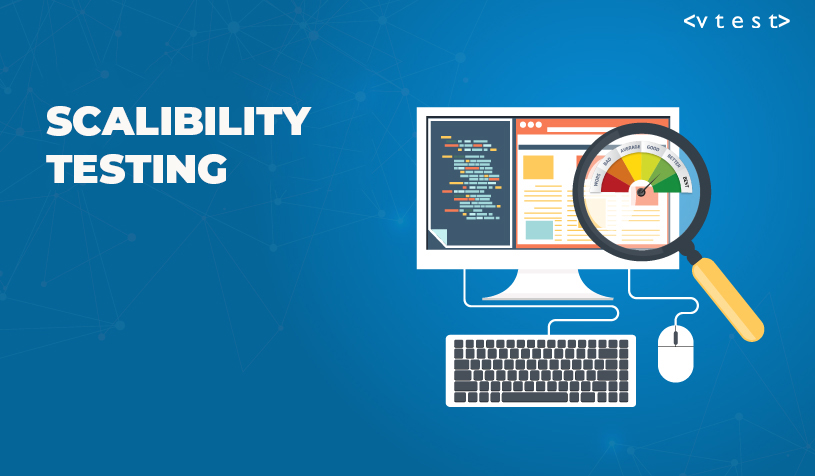
When testing software, one of the important factors to consider is the scalability of your app. There are various ways to go about verifying the scalability of a given software. It is the meter to decide how much one can scale the product with the increasing workload.
Let’s take an example. If the users of the given software increase by 2 times the load it can carry, we will have to increase the degree of the server’s performance as well as decrease the server’s response time for a good experience with the user interface.
By doing scalability testing, one eliminates all the minor anxious issues in the system. It is the answer to several questions like,
- When the software and hardware are changed, how does the server perform?
- In this situation, Can the system’s productivity be increased and capability upgraded?
Scalability Testing – Need
There are several reasons why scalability testing is important in the testing process. Firstly, It helps one decides the software’s behavior when the load is increased. Secondly, It gives clear insights about the total number of end-users it can carry.
All this aside, the primary reason behind this is to comprehend the point at which the software starts lagging and to analyze the potential solution’s to these lagging challenges.
Scalability Test – Creation
Scalability testing is executed by performing several load tests, one by one, with complementary software and hardware changes, and by keeping all the other variables unchanged. Also, it tests multiple elements in the system like,
- Network/Memory Usage
- Load with several end-users using the software
- Request and Response Time
- System Throughput
- Performance Measurement
- Screen Transition
- Hits/Transactions Per Second
The execution of the scalability test should be systematic to ensure that all the elements are getting tested and all the necessary data is collected. For obvious reasons, the type of load differs from software to software. It depends upon users, web servers, and type of software. When performing, try to think about all other variables that might affect when the load is increased.
Scalability Test – Essential requirements
Now, let’s discuss some basic prerequisites that are needed before performing scalability testing.
Memory:
The memory requirements for all virtual users using the software must be evaluated.
Processor:
The respective processor requirements must be verified before initializing the process.
Operating System:
Verification of the OS acting as an agent and testing the load must be done.
Load distribution capability:
A centralized system in which all the results are gathered and analyzed from various machines and individuals must be in place.
Scalability Test – Stepwise Creation
- First, create all the scenarios and regulate them.
- Change the scenarios and look for the elements that are affected by that change.
- Re-verify the scenario to ensure their performance to be the same every time.
- Decide and define a group of virtual users for testing the software.
- By clearly specifying the settings that permit you to analyze the performance of the application, create the load tests.
- Execute the tests.
- If you find any lags, make the respective changes to the server and repeat the execution of the tests.
Analyzing the Test Results
When you execute the test cases, what you are doing is deciding just 40% of your performance testing goals. The important part here is the analysis and correction of the results. The analysis of the results gained in the scalability tests can be done in several ways. Some of them are as follows.
1. Virtual Users v/s Response time
Many organizations use this method by deciding a specific time interval. Let’s say it is 2 minutes. Now, they increase the number of users for that specific server load and then verify the software behavior. They test the software’s response time for a given number of users.
2. Users v/s Latency
This is the type where the latency of the network on which the users are operating is checked.
3. Hits v/s users
The observation of hits per second is done after 3 minutes of response. After this, the latency time starts.
4. Users v/s errors
Errors and bugs created by the software when under load are tracked and compared with the number of users at that time.
Conclusion
Once the testing is done, keep in mind to check that you have all the data in the record for further increasing the capacity of the load in the future.
In general, it is a good habit to keep the data backup for the planning of the tests so that when you perform the same tests in the future, you will have a meaningful and relative reference.
How VTEST can help
At VTEST, we have employed individuals who not only excel at their software testing skills but are also creative and open-minded in the strategic decisions. We take it as our utmost priority to enhance software reliability and usability in every way possible.
VTEST it!

